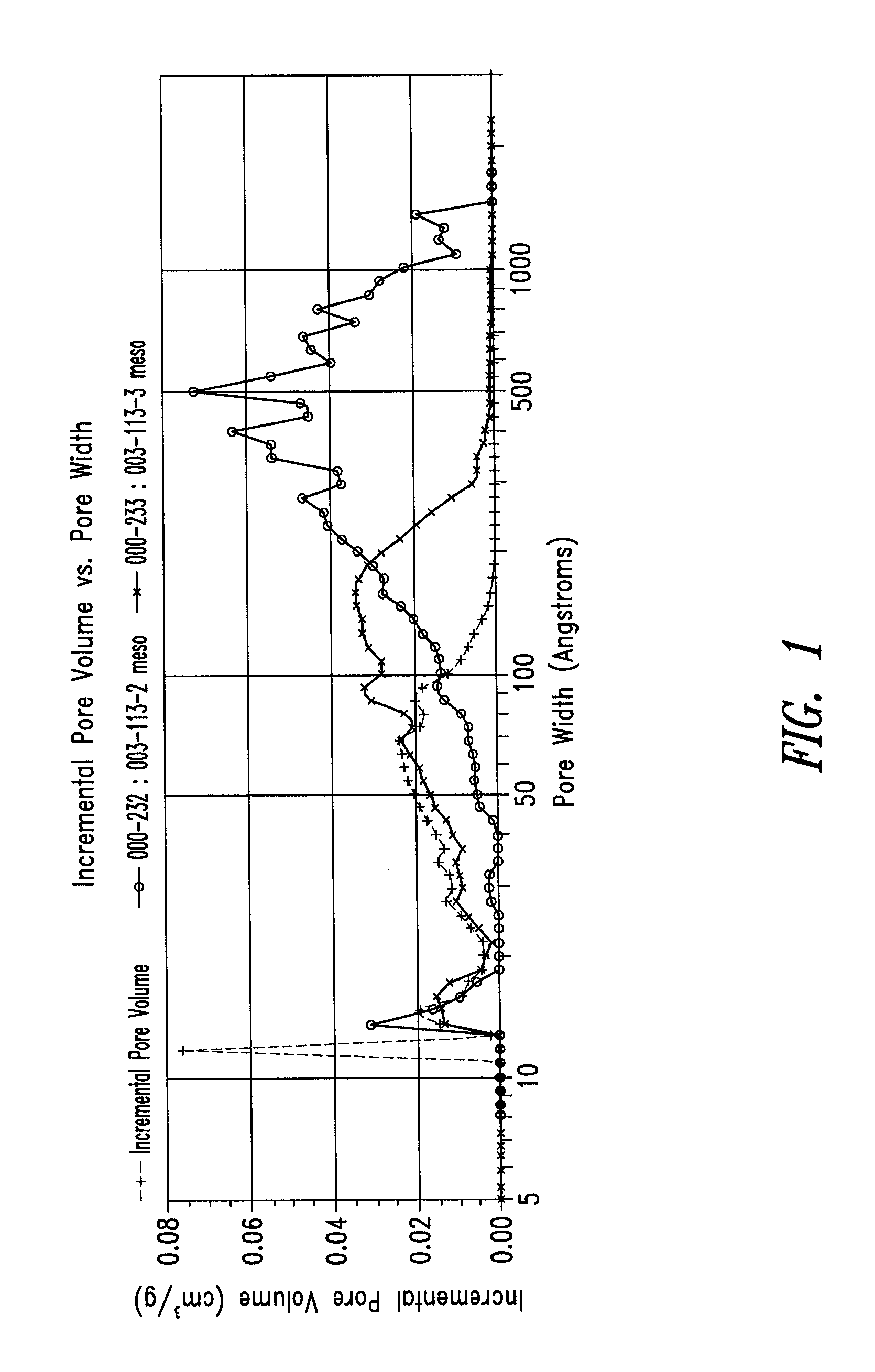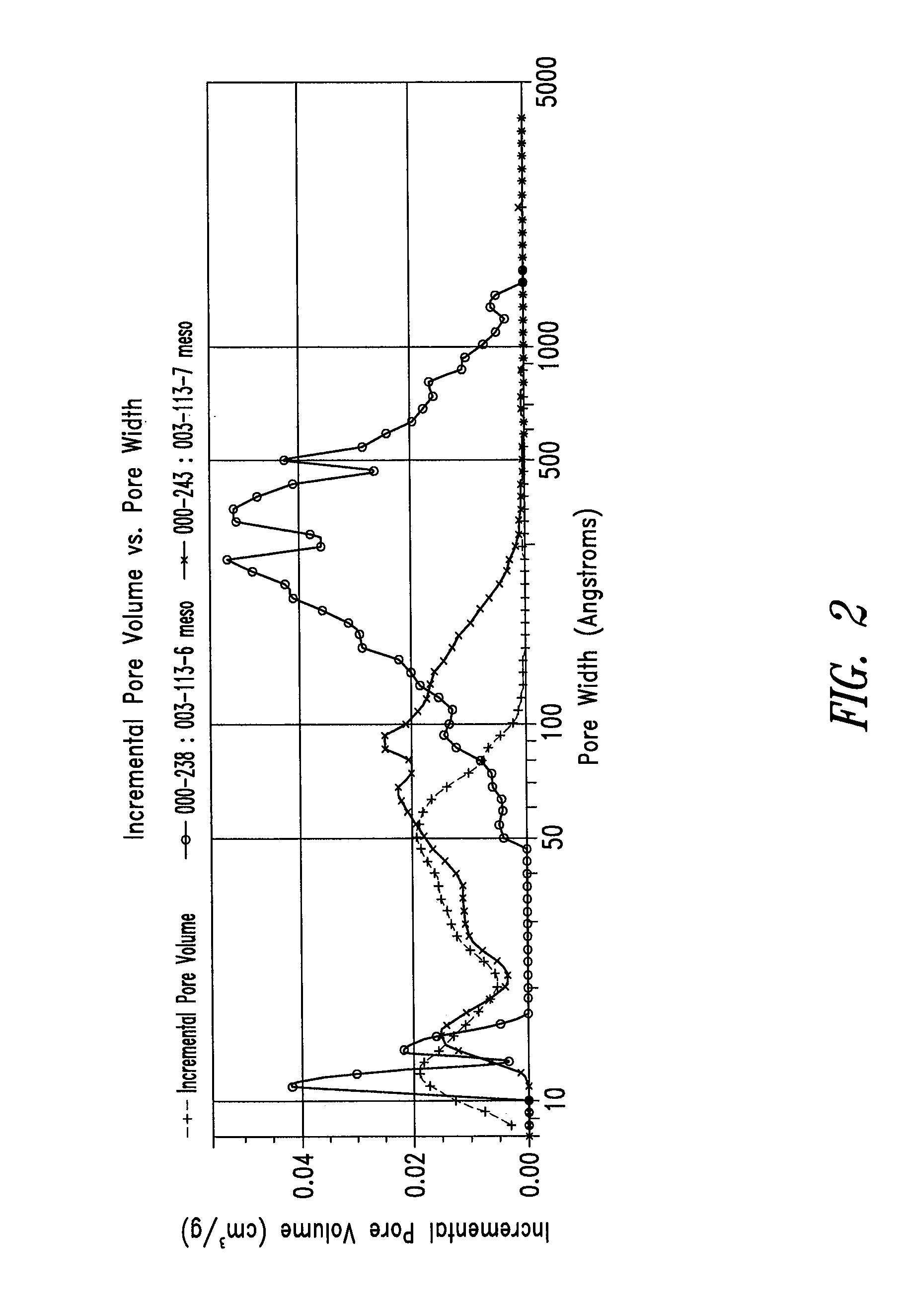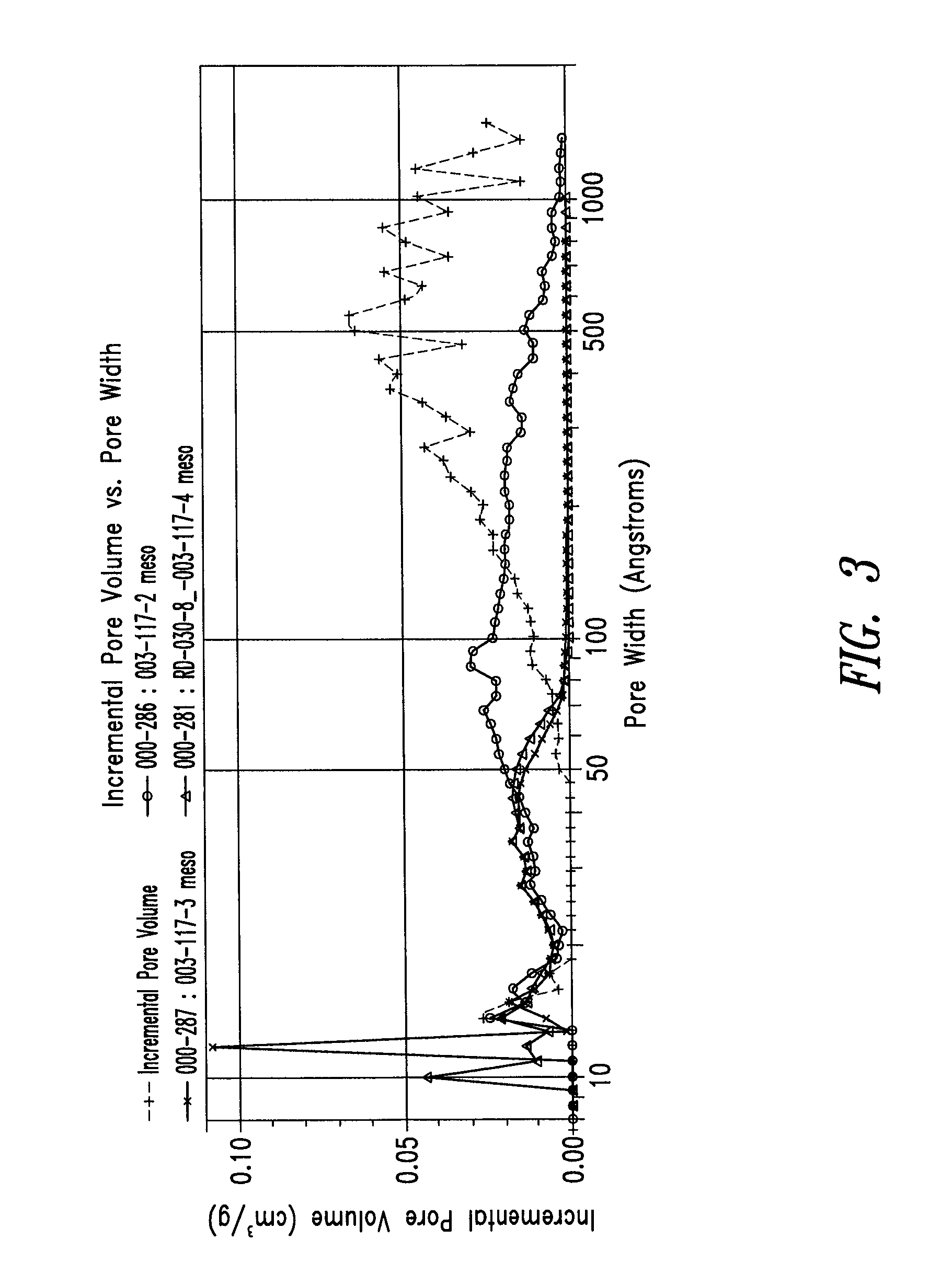Ultrapure synthetic carbon materials
a synthetic carbon and carbon material technology, applied in the field of ultra-capture synthetic carbon materials, can solve problems such as the degradation of other components, and achieve the effect of improving operation and shortening life span
- Summary
- Abstract
- Description
- Claims
- Application Information
AI Technical Summary
Benefits of technology
Problems solved by technology
Method used
Image
Examples
example 1
Production of RF Gels from 100% Acetic Acid Solution
[0252]A series of RF gels were made form “neat” acetic acid (i.e., anhydrous). Three samples were produced with varying levels of ammonium carbonate (as “catalyst”): none, and ˜100 and ˜25 R / C. These samples were crushed by hand to create particles, frozen by immersion in liquid nitrogen, and lyophilized. A summary of these formulations and their specific surface areas is presented in Table 1. All three samples were monolithic and orange in color. Color intensity was greater for those samples containing ammonium carbonate. The specific surface area of the three samples were between 597 and 644 m2 / g.
[0253]FIG. 1 presents the incremental pore volume vs. pore width for these samples. The sample prepared without catalyst had a DFT average pore size of about 185 Å, with a broad peak between about 100 and 1000 Å, and a secondary peak at about 14 Å (and was relatively devoid of pore volume in between). In contrast, as catalyst was added t...
example 2
Production of RF Gels from 90:10 Acetic Acid:Water (vol:vol) Solution
[0255]In order to examine the effect of addition of a small amount of water in the system, a series of RF gels were produced from a mixed solvent of acetic acid:water in a 90:10 vol:vol ratio (prior to addition of formaldehyde). Three samples were produced with varying levels of ammonium carbonate: none, and ˜100 and ˜25 R / C. These samples were crushed by hand to create particles, frozen by immersion in liquid nitrogen, and lyophilized.
[0256]A summary of these formulations and their specific surface areas are presented in Table 2. All three samples were monolithic and orange in color. Color intensity was greater for those samples containing ammonium carbonate. The specific surface area of the three samples was between 586 and 653 m2 / g.
[0257]FIG. 2 presents the incremental pore volume vs. pore width for these samples. The sample prepared without catalyst had a DFT average pore size of about 160 Å, with a broad peak ...
example 3
Production of RF Gels from 50:50 Acetic Acid:Water (vol:vol) Solution
[0259]To further examine the effect of addition of water, a series of RF gels were produced from 50:50 acetic acid:water (prior to addition of formaldehyde). Three samples were produced with varying levels of ammonium carbonate: none, and ˜100 and ˜25 R / C. A fourth sample was made with the addition of ammonium acetate at a ratio of ˜25 R / C. These samples were crushed by hand to create particles, frozen by immersion in liquid nitrogen, and lyophilized.
[0260]A summary of these formulations and their specific surface areas are presented in Table 3. All four samples were monolithic and orange in color. Color intensity was greater for those samples containing ammonium carbonate or ammonium acetate. The specific surface area of the four samples was between 560 and 693 m2 / g.
[0261]FIG. 3 presents the incremental pore volume vs. pore width for these samples. The sample prepared without catalyst had a DFT average pore size o...
PUM
| Property | Measurement | Unit |
|---|---|---|
| atomic numbers | aaaaa | aaaaa |
| BET specific surface area | aaaaa | aaaaa |
| atomic number | aaaaa | aaaaa |
Abstract
Description
Claims
Application Information
 Login to View More
Login to View More - R&D
- Intellectual Property
- Life Sciences
- Materials
- Tech Scout
- Unparalleled Data Quality
- Higher Quality Content
- 60% Fewer Hallucinations
Browse by: Latest US Patents, China's latest patents, Technical Efficacy Thesaurus, Application Domain, Technology Topic, Popular Technical Reports.
© 2025 PatSnap. All rights reserved.Legal|Privacy policy|Modern Slavery Act Transparency Statement|Sitemap|About US| Contact US: help@patsnap.com



